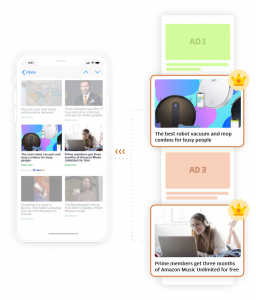 Once upon a time back in 2009, infographics were the archetypal victims of their own success. After a few early examples gained extraordinary traction online, internet marketers everywhere jumped on the infographic bandwagon…
Once upon a time back in 2009, infographics were the archetypal victims of their own success. After a few early examples gained extraordinary traction online, internet marketers everywhere jumped on the infographic bandwagon…
An infographic history lesson
The “original” infographics thrived, offering viewers a visually appealing, high-impact way to digest information. The “hangers-on” enjoyed less success. Eager to jump aboard the online trend, digital marketers commissioned increasingly poorly thought-through infographics featuring clumsy graphics, inaccurate facts and figures and none of the smart economy of design which made this type of content so successful in its early days.
The result was a wave of hastily compiled, next-to-useless infographics which quickly turned the pro-infographic mood sour. Even Google’s Matt Cutts spoke out against the outpouring of low quality infographics, threatening to discount any links they earned.
All is not lost
But that was then, and this is now. Fast-forward to 2015 and you’ll find a digital world increasingly concerned with quality. The lingering stigma around poor quality infographics still remains, but so too does an understanding of the potential benefits of the medium – provided you get it right. Create the perfect infographic and you still have a very valuable, usable, shareable resource which will stand the test of time, (plus capture the interest of web users’ legendarily short attention spans).
Backed up by great data and intelligently designed, infographics are still valuable digital collateral, which can be used in a variety of ways; from building traffic and boosting brand awareness, to helping consumers really understand your offering. So, how can you create an infographic which ticks all the right boxes and generates the return on investment (ROI) your digital marketing campaign needs? That’s what we’re here to explain…
How to create the ultimate infographic
There are a few different stages to building a quality infographic which brings you the traffic, links and attention you’re looking for. But before we dive into the process, there’s one thing you must bear in mind at every juncture:
There’s no point in designing an infographic half-heartedly or on the fly. The only way to yield good returns is to ensure your piece of content has the best research, the best graphics, the best user experience, the best “story” and the most insight.
With that understood, let’s get started!
Choosing your topic
If you’ve got this far, chances are you already have an infographic subject in mind. But make sure you read this section before you skip ahead.
Choosing the right topic is crucial. Get it wrong and your content will be a flop. Get it right, and you’ll have a strong foundation for something super shareable. Here is a tick-list of questions to ask yourself before you settle on your subject…
- Will the topic interest your target audience?
- Does the topic relate to your brand and present it in a good light?
- Has it been done before? (If yes, can you do it better?)
- Is the subject in depth enough to need an infographic? (If the topic is too simplistic, an infographic can feel like overkill.)
- Is the subject too complex to represent in one infographic? (Too much information can be confusing, losing the clarity a good infographic can provide.)
- Does the topic capture the Zeitgeist? (Make sure it’s being talked about via tools like Google Trends and BuzzSumo.)
- Do you have new or freshly discovered information to add to the topic?
- Do you have enough reliable and verifiable data sources to create your infographic?
- Does this data paint an interesting picture?
Once you’ve chosen a topic, worked through the list and solidified your idea, it’s time to start sourcing your data…
Finding your data
Finding and using the right data is just as important as choosing the perfect topic. Data is at the heart of infographics. Without reliable facts, the whole thing falls through and nobody will take your creation seriously. Bad data can even reflect badly on your brand, suggesting some serious sloppiness.
You may choose to run your own survey to collect your own data, in which case it’s well worth reading up on how to do this properly. If you’re going to take the easier road and use existing facts and figures, you’ll find dozens of good resources online, many of which offer free access to raw facts. Take a look at:
Creating a story
Now you have the topic and the facts, it’s time to give them that all important narrative. This is the part of the process that will make or break your infographic. You need to turn your data into a clear “story.”
Perhaps it shows a rise or fall in something over time, perhaps it just exposes two contrasting stances, perhaps it breaks down a confusing whole into smaller pieces of digestible information…?
Whatever picture your data paints, you need to see it as a story. Infographics may be all about visual appeal, but they need a strong “plot” to ensure those graphics flow and make sense together. If you fail to build a compelling story, your infographic will be little more than a collection of loosely related facts. Here are a few common infographic forms to help give you some pointers:
- The Comparison
Great for data showing two sides of an argument or situation. Use Venn diagrams, graphs and charts to demonstrate differences. Also great for promoting products or services which beat your competitors’ hands down.
- The Explainer
From economic recession to BitCoins, there’s always something on the news to bamboozle us. This form gives readers the key facts while taking them step-by-step through the issue at hand.
- The Tickler
Everyone likes a chuckle. This style of infographic requires a deft touch and funny graphics to really shine. Great for debunking or confirming urban myths and legends.
- The “Well I Never!”
Surprise, amaze and educate your readers with little known facts and figures. Start small (but intriguing) then work your way up to those big-hitting, astonishing facts.
- The How To
Make your infographic useful by showing readers how to do something. Just like a recipe book, the structure of this sort of graphic should have a straightforward flow.
They say a picture paints a thousand words, but your infographic will need some text to make sure readers know what they’re looking at. Blending text and graphics can be a very tricky business, which is why it’s well worthwhile getting your writer and your designer to work side-by-side when it comes to putting everything together.
As a rule of thumb, writing needs to be as concise as it possibly can be, while still explaining clearly. Too much text will clutter up an infographic irredeemably. Too little could leave viewers scratching their heads.
The most important text on your graphic will be your title and subheading. This is really all you have by way of introduction, which is why it needs to clearly and simply sum up precisely what the infographic is about, exactly what it will achieve and what the reader will get from viewing it.
Designing your graphics
Next up, the imagery! The narrative of your infographic should inform the “shape” of your graphics. Use your story as a guideline for your first, basic draft, known as a wireframe. This should be a really rough draft, completed with a pencil and paper if you like, or more professionally with a wireframe builder.
With the basic shape in place, make sure you get as much input as possible from colleagues and others who have no prior knowledge of your project. If it makes sense to them, it should make sense to your audience.
Once you have finalised your wireframe, it’s time to decide on how you will present your data. From repeated charts and Venn diagrams, to timelines, maps, bar graphs and flow charts, there are any number of formats you can use to turn information into something visually appealing. Again, get as much input from outsiders as possible to make sure you’re on the right track.
Finally, the finishing touches – making everything look pretty. Don’t be tempted to overdo the images at this point. Your data should speak loud and clear on its own, not be overwhelmed by typography, borders and illustrations.
Keep it simple, but don’t shy away from clever design if it makes sense. If you have a developer on board, you may want to think about the various UX (user experience) or interactive features you could include at this point to make your infographic extra fun and engaging.
Oh, and you might want to avoid these design no-nos along the way:
- Never use text where you can use imagery, find imaginative ways to visualise data instead.
- Don’t use basic charts you could have made with Excel – your infographic should be more creative, intelligent and engaging than that.
- Don’t rely on typography. Yes, it’s easier to write information out, but it’s your imagery which should be doing the talking, no matter how pretty the font.
- Don’t forget the “A-ha!” moment. This central fact or piece of data should be physically central and grab attention.
- Avoid black and neon colours in general – and avoid white backgrounds. These shades will make text hard to read and make it tricky to pinpoint the beginning or end of your infographic on white websites.
- Don’t ignore the “three colour” rule. A palette limited to just three colours can keep your design looking neat and consistent.
Publishing and promoting
Congratulations! You should now have a top notch, great looking and genuinely valuable infographic on your hands. Now, what should you do to squeeze the maximum digital marketing juice out of your new piece of incredible content?
Step 1: Publish on your own website
When your infographic (inevitably) goes viral, the site it’s originally published on is going to suck up all that lovely traffic and digital marketing juice. Make sure you publish your infographic on the website you want to benefit from this attention.
Step 2: Make it accessible
From fast loading times (ensured by web-optimised images with the highest possible quality for the smallest possible size), to using standard image file types (.jpg or .png), it’s important to make your infographic as accessible as you can to as many people as you are able.
Step 3: Make it shareable
Make it possible for others to share your amazing creation on their website by using an embed code (here’s how to make one). Also be sure to prominently display social sharing buttons to make it super easy for viewers to pass on your infographic (free publicity!).
Sadly, even with embed codes, some people simply download and upload images directly. To make sure you always get credit, ensure your brand name and web address are clearly displayed at the top and bottom of the infographic itself.
Step 4: Submit to authoritative sites
Now it’s time to start peddling your creation to well-respected, good quality sites. This handy list of sites which accept infographic submissions comes from Moz’s helpful infographic blog.
- F*ck yeah infographics
- Visually
- Cool Infographics
- I Heart Infographics
- Infographr
- Submit Infographics
- Daily Infographic
- Visual Loop
- Chart Porn
- Infographic Directory
Next, take time to reach out to the very best blogs in your sector, or in a niche related to your infographic’s subject. If the content is general and interesting enough, you could even approach news sites and entertainment sites to earn links and interest.
Step 5: Get social
Leverage all of your social channels to get your infographic out there. Twitter, Facebook, Pinterest, Instagram, Google+, Reddit – leave no stone unturned. Make a noise about your new content, but don’t give the game away. Hint intriguingly at your subject to get the best social click through response.
Et voilà! Your infographic is now looking beautiful, inspiring readers, and generating as much buzz as possible. Now it’s time to sit back with a hard earned cuppa and measure those metrics…
(269)
Report Post





